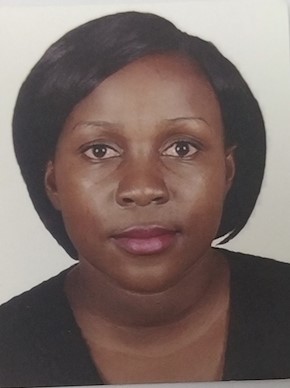

Dr
Tecla Temu
Project Title
Inflammation, T Cell activation and Subclinical atherosclerosis in Treated HIV Infection (Kenya CVHIV)
Project Objectives
SPECIFIC AIMS In sub-Saharan Africa, more than 25 million people live with HIV/AIDS, cardiovascular disease (CVD) is a leading cause of morbidity and mortality1. HIV infection has been shown to increase risk of CVD in European and US populations, raising concerns that the HIV epidemic will significantly accelerate rates of CVD in Africa as the HIV-infected population lives longer and there are fewer deaths from HIV-related causes2-4. In Kenya and other countries hard hit by the HIV epidemic, there is an urgent need to expand our understanding of CVD epidemiology and risk factors. Without this, it will be impossible to garner national and international support needed to adopt and implement guidelines, programs and policies to reduce CVD risk at the population level. As in resource-rich countries, traditional CVD risk factors are highly prevalent among HIV-infected adults in sub-Saharan Africa. More than 55% of HIV-infected adults on antiretroviral therapy (ART) in one Ugandan study were found to have metabolic syndrome, defined as having at least two of the following: hypertension; fasting blood glucose, hyperlipidemia; high BMI5,6. HIV-specific risk factors are also likely to play an important role through inflammation and immune activation7. The relative contribution of immune activation and inflammation is not well defined in Africa and is one of the questions to be addressed in this application. While many developed country based studies find an association between inflammation and subclinical atherosclerosis8, this has not been the case in the more limited number of African studies. Furthermore, compared to US and Europe studies, studies in sub-Saharan Africa have been small, have not directly evaluated the contribution of risk due to inflammation/immune activation, and have not compared HIV-infected and uninfected adults9-11. This latter comparison may be particularly relevant in regions such as western Kenya where all adults regardless of HIV status
Host Organisation
| Department | Institution | Country |
|---|---|---|
| University of Nairobi | University of Nairobi | KE |
EDCTP Project
TMA2016CDF1598
EDCTP Program
EDCTP2
EDCTP Project Call
Career Development Fellowship (CDF)
Study Design
Study Design and Methods Relevant to Specific Aims 1 Specific Aim 1a: To determine if high sensitivity C-reactive protein serum levels, and other inflammation biomarkers are significantly higher in HIV positive compared to the HIV negative subjects. Specific Aim 1b: To determine if the percentage of CD38+ and HLA-DR+ CD8+ T cells and other markers of cellular immune activation including CMV-specific T cell responses are significantly higher among HIV-infected compared to uninfected controls. Rationale: In resource-rich setting, persistent immune activation and inflammation has been observed even in virally suppressed and has been associated with subclinical atherosclerosis. There is considerable controversy regarding the inflammatory state of HIV-infected patients in Africa particularly western Kenya where all adults regardless of HIV status are at risk for inflammation and immune activation due to chronic exposure to bacterial and parasitic infections, including malaria and helminthes. Therefore, identifying important differences in inflammation and immune activation biomarkers between those with and without HIV infection will be essential to tailoring future public health and treatment interventions. Using the facilities and resources of the University of Nairobi College of Health Sciences Medical Microbiology laboratory, I propose to use banked samples from Kenya CVHIV study to measure levels of inflammatory and immune activation markers of 200 HIV-infected individuals on long term ART treatment and 100 age/match uninfected controls to determine if HIV positive patients have increased inflammation and immune activation. The primary endpoint for Aim 1a and 1b will be high
Project Summary
Despite the high prevalence of HIV in sub-Saharan Africa, Cardiovascular diseases (CVD) are the leading causes of morbidity and mortality in this region. Predictors of CVD are well established in resource-rich countries, but whether these same risk factors are strongly associated with CVD in sub-Saharan Africa is not known. Growing evidence from Europe suggests that HIV itself may be a risk factor for CVD, through a combination of medication side effects, inflammation and immune activation, but how HIV disease and treatment impacts CVD risk in Kenya and other countries with generalized HIV epidemics is less well studied. In addition, it remains unclear whether inflammation and immune activation truly predicts early risk of CVD in African HIV-infected subjects and should remain a target for intervention. The goal of this project is to assess the relative contributions of persistent inflammation and immune activation in subliclinical atherosclerosis in HIV-infected subjects. Our central hypothesis is that systemic immune activation and inflammation associated with HIV infection contribute to early risk of CVD in HIV positive individuals, and that CMV infection and microbial translocation may contribute to this process. Aim 1: To determine if HIV-infected individuals have increased inflammation and immune activation compare to the uninfected controls, Aim 2: To test the markers of immune activation and inflammation are associated with an increased risk of subclinical atherosclerosis. Aims 1&2 will leverage the ongoing Kenya study of cardiovascular diseases during HIV infection cohort of 300 HIV-infected on long-term antiretroviral treatment and 300 HIV-uninfected subjects. We will conduct a cross-sectional, nested case-control study of 200 HIV+ and 100 HIV- subjects and analyze banked blood from the study for markers of inflammation, CMV infection, microbial translocation and cellular immune activation, selected for their association with CVDs in HIV- uninfected populations. We will investigate associations with subclinical atherosclerosis in HIV+, adjusting for age, sex, HIV related and traditional risk factors and derive a set of candidate biomarkers to validate prospectively. This innovative and important clinical study on a well characterized cohort will illuminate the mechanisms leading to increased risk of CVD in HIV-infected individuals and provide data that will be critical to developing targeted, feasible intervention trials to combat CVD in sub-Saharan Africa over the next decade. It would provide a springboard for launching Dr. Temu's independent physician-scientist career in the field of HIV immunology in Kenya.


